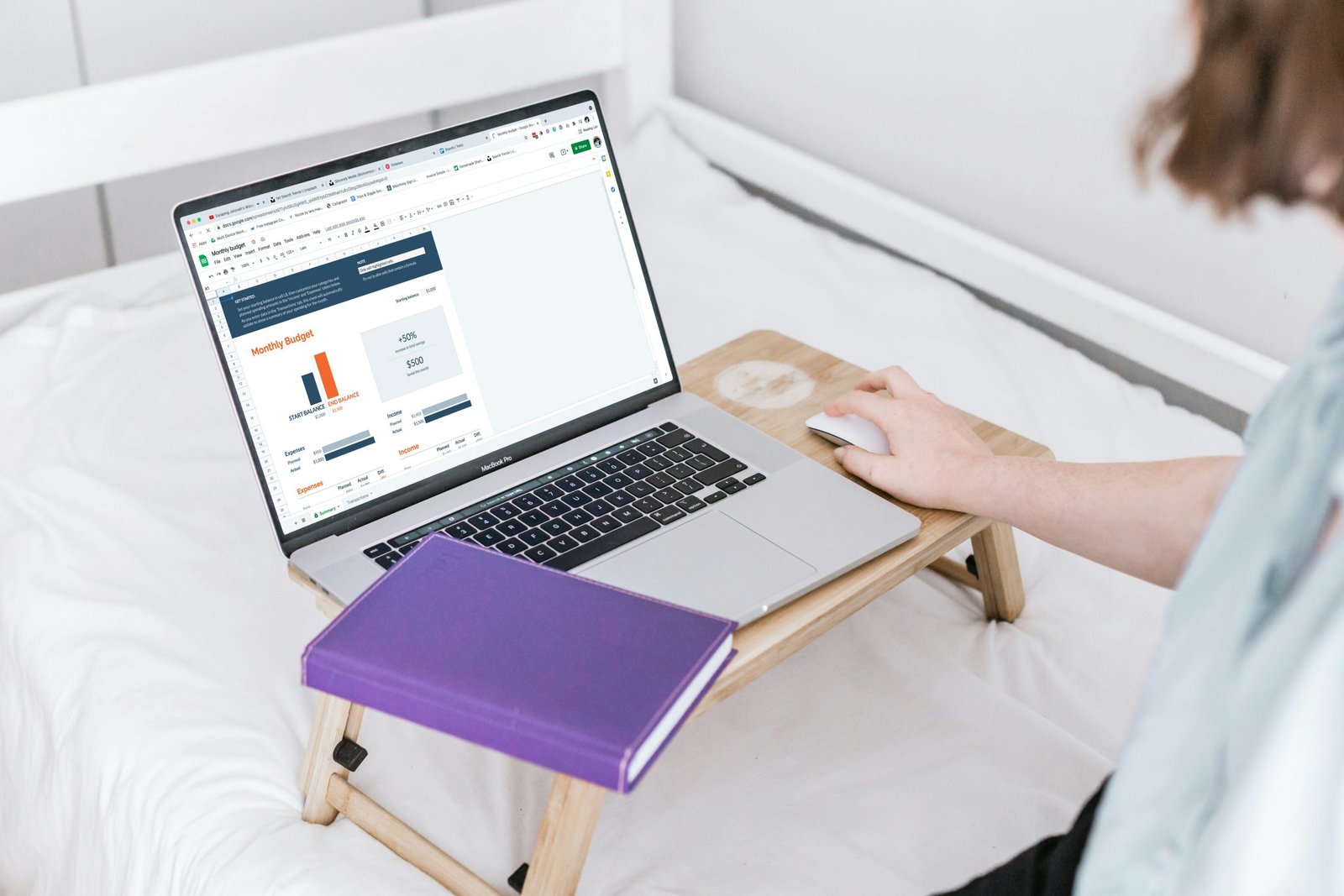
Creating and sticking to a personal budget can be a challenging task, but it’s an essential part of taking control of your finances and reaching your financial goals. Whether you’re trying to pay off debt, save for a big purchase, or simply gain a better understanding of your spending habits, a well-designed budget can be a powerful tool.
In this blog post, we’ll explore the step-by-step process of creating a budget that works for your unique financial situation and lifestyle. We’ll cover the latest budgeting strategies, tips for tracking your expenses, and practical advice for making your budget sustainable in the long run. By the end, you’ll have the knowledge and confidence to build a budget that truly supports your financial well-being.
Understanding Your Financial Situation
The first step in creating an effective budget is to understand your current financial situation. This means taking a close look at your income, expenses, assets, and liabilities. Start by gathering the following information:
Income
- Your primary source of income (e.g., salary, wages, freelance work, etc.)
- Any secondary or irregular sources of income (e.g., side hustles, investments, government benefits, etc.)
- The frequency and amount of each income source (e.g., weekly, bi-weekly, monthly)
Expenses
- Fixed expenses (e.g., rent/mortgage, car payments, insurance premiums, etc.)
- Variable expenses (e.g., groceries, utilities, gas, entertainment, etc.)
- Debt payments (e.g., credit card bills, student loans, personal loans, etc.)
Assets and Liabilities
- Cash savings (e.g., checking and savings accounts)
- Investments (e.g., retirement accounts, brokerage accounts, etc.)
- Real estate or other valuable property
- Outstanding loans, credit card balances, and other debts
Once you’ve gathered this information, you can start to get a clear picture of your financial situation. This will help you identify areas where you can cut back on expenses, opportunities to increase your income, and the amount of money you have available to allocate towards your financial goals.
Determining Your Financial Goals
With a solid understanding of your current financial situation, the next step is to determine your financial goals. These goals will serve as the foundation for your budget and help you stay focused on what’s most important.
Some common financial goals include:
- Paying off debt (e.g., credit cards, student loans, etc.)
- Building an emergency fund with 3-6 months’ worth of living expenses
- Saving for a down payment on a house
- Investing for retirement
- Funding a child’s education
- Taking a dream vacation
When setting your goals, be as specific as possible. For example, instead of simply saying “save more money,” set a goal to save $500 per month towards a down payment on a house. This will make it easier to track your progress and stay motivated.
It’s also important to prioritize your goals and allocate your resources accordingly. Some goals may be more urgent or important than others, so be prepared to make tough choices about where to focus your financial efforts.
Creating Your Budget
With your financial information and goals in hand, you’re ready to start building your budget. There are several different budgeting methods to choose from, so consider trying a few to see which one works best for you.
The 50/30/20 Method
The 50/30/20 method is a popular budgeting approach that divides your after-tax income into three main categories:
- 50% for essential expenses (e.g., rent, groceries, utilities, etc.)
- 30% for discretionary spending (e.g., entertainment, dining out, travel, etc.)
- 20% for savings and debt repayment
This method provides a simple, balanced framework for managing your money, but it may need to be adjusted based on your specific financial situation and goals.
Zero-Based Budgeting
Zero-based budgeting is a more detailed approach that requires you to “zero out” your income by allocating every dollar to a specific expense or savings category. This method helps ensure that you’re not overspending in any one area and that your money is being used efficiently.
To create a zero-based budget, start by listing all your income sources. Then, assign each dollar of that income to a specific expense or savings category until you’ve allocated 100% of your income. This may require some trial and error, but it can be a highly effective way to gain complete control over your finances.
Envelope Budgeting
Envelope budgeting is a cash-based system that involves physically dividing your money into different envelopes for each spending category (e.g., groceries, gas, entertainment, etc.). When an envelope is empty, you know you’ve reached your limit for that category and can’t spend any more until the next budgeting period.
This method can be especially helpful for those who tend to overspend in certain areas, as it provides a tangible, visual representation of your available funds.
Regardless of the budgeting method you choose, be sure to include the following key elements in your budget:
- Fixed expenses (e.g., rent, car payments, insurance, etc.)
- Variable expenses (e.g., groceries, gas, utilities, etc.)
- Debt payments (e.g., credit cards, student loans, personal loans, etc.)
- Savings and investment contributions
- Discretionary spending (e.g., entertainment, dining out, hobbies, etc.)
Want YouTube success, but camera shy?
Tube Mastery 3.0 teaches you to build profitable channels WITHOUT showing your face! ✅ Niche selection, video creation (no camera!), growth strategies & more. See student results: 40,000 subscribers in 5 months & $4,000 daily income! Learn the faceless YouTube method & ditch the camera! ➡️ [Link here]
Tracking and Adjusting Your Budget
Creating a budget is just the first step – the real challenge comes in sticking to it. To make your budget work for you in the long run, you’ll need to develop a system for tracking your expenses and making adjustments as needed.
Tracking Expenses
There are several ways to track your expenses, from the traditional pen-and-paper method to using budgeting apps and software. Consider trying a few different approaches to see what works best for your lifestyle and spending habits.
Some popular expense tracking methods include:
- Using a budgeting app like Mint, YNAB, or Personal Capital
- Manually recording expenses in a spreadsheet or notebook
- Linking your bank and credit card accounts to automatically categorize transactions
- Saving receipts and logging expenses at the end of each day or week
Whichever method you choose, be sure to review your expenses regularly (e.g., weekly or monthly) to identify areas where you may be overspending and make the necessary adjustments to your budget.
Adjusting Your Budget
As your financial situation and goals evolve, you’ll need to be prepared to adjust your budget accordingly. Review your budget on a regular basis (e.g., monthly or quarterly) and make changes as needed. This may involve:
- Increasing or decreasing allocations for certain spending categories
- Adjusting savings and debt repayment goals
- Incorporating new income sources or expenses
- Exploring ways to cut costs or increase your income
Remember, your budget is a living document that should be tailored to your unique circumstances. Don’t be afraid to experiment and make changes until you find a system that truly works for you.
Staying Motivated and Accountable
Creating and sticking to a budget can be a challenging task, but there are several strategies you can use to stay motivated and accountable:
Celebrate Small Wins
Achieving your financial goals, no matter how big or small, is worth celebrating. Acknowledge your progress and successes, whether it’s paying off a credit card balance, hitting your savings target for the month, or simply sticking to your budget for a week. This positive reinforcement can help you stay motivated and focused on the long-term.
Enlist Support
Share your financial goals and budgeting plan with trusted friends or family members. They can provide encouragement, hold you accountable, and even offer helpful suggestions. You could also consider joining a budgeting or personal finance community, either online or in-person, to connect with others who are on a similar journey.
Automate Your Finances
Set up automatic transfers to your savings and investment accounts to ensure that your money is being allocated as planned. This can help you stay disciplined and avoid the temptation to overspend. You can also set up automatic bill payments to avoid late fees and ensure that all your essential expenses are covered.
Review and Adjust Regularly
Regularly reviewing your budget and making necessary adjustments is key to maintaining its effectiveness. Set aside time each month or quarter to go over your expenses, income, and financial goals, and make any changes needed to keep your budget on track.
Free Ebook: Conquer Your Finances!

Conclusion
Creating a budget that works for you is an essential step in taking control of your financial future. By understanding your current financial situation, setting clear goals, and implementing a budgeting system that aligns with your lifestyle and priorities, you can develop a sustainable plan for managing your money and achieving your financial dreams.
Remember, budgeting is an ongoing process, and it may take some time and experimentation to find the right approach for you. Stay patient, be willing to make adjustments, and celebrate your progress along the way. With the right mindset and strategies, you can build a budget that truly supports your financial well-being and helps you reach your goals.

















